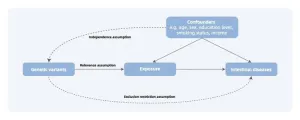(Press-News.org) The struggle to cut emissions is real.
Last year, the world emitted more than 37 billion metric tons of carbon dioxide, setting a new record high. As a result, sucking CO2 out of the atmosphere has become an increasingly popular idea. Governments worldwide are banking on this technology, called direct air capture, to help them achieve climate goals and avoid the worst consequences of climate change.
But despite more than a dozen direct air capture facilities being up and running around the globe already, the technology still faces major technological hurdles—including its own high energy use.
In a study published May 1 in the journal ACS Energy Letters, researchers at the University of Colorado Boulder and collaborators revealed that a popular approach many engineers are exploring to reduce those energy costs would, in reality, fail. The team, including scientists at the National Renewable Energy Laboratory in Golden, Colorado and Delft University of Technology in the Netherlands, also proposed an alternative, more sustainable design for capturing CO2 and converting it to fuels.
“Ideally, we want to take CO2 out of the air and keep it out of the air,” said first author Hussain Almajed, a Ph.D. student in the Department of Chemical and Biological Engineering. “However, some of this CO2 can be recycled into useful carbon-containing products, which is why researchers have proposed different ideas of how we can achieve that. Some of these ideas look very simple and elegant on paper, but researchers rarely check whether they are practical and economical in industrial settings.”
Trapping the gas
One of the most common direct air capture approaches is to use air contactors, essentially huge fans that pull air into a chamber filled with a basic liquid. CO2 is acidic, so it naturally binds to and reacts with the solution to form harmless carbonate (the main ingredient in concrete) or bicarbonate (the ingredient in baking soda).
Stratos, one of the world’s largest direct air capture facilities under construction in Texas, uses this approach.
Once CO2 is trapped in the carbonate or bicarbonate solutions, engineers must separate it out from the liquid so the liquid can return to the chamber to capture more CO2.
Meanwhile, the captured carbon can be converted into things like plastics, carbonated drinks and even – with further processing – fuel to power homes and potentially airplanes.
But there is a catch. To release the trapped CO2, companies need to heat the carbonate and bicarbonate solution to at least 900˚C (1,652° F), a temperature solar and wind energy is unable to achieve. This step is usually powered by burning fossil-based fuels like natural gas or pure methane.
“If we have to release CO2 in order to capture CO2, it defeats the whole purpose of carbon capture,” said Wilson Smith, a professor in the Department of Chemical and Biological Engineering and a fellow of the Renewable and Sustainable Energy Institute at CU Boulder.
Close the loop
Researchers are actively looking for answers. One idea, commonly known as reactive capture, is to apply electricity to the carbonate and bicarbonate solutions, zapping the CO2 and basic liquid apart in the chamber. In theory, the recycled liquid can then capture more CO2, forming a closed-loop system.
“Reactive capture is now the buzzword in the field, and researchers proposed that it could help save energy and costs associated with carbon capture. But no one really assessed whether that’s realistic under industrial conditions,” Almajed said.
To do that, the team calculated the mass and energy outputs of the reactive capture units, based on given inputs, to understand how well the overall system would perform. They found that in an industrial setting, electricity would not be able to regenerate the basic liquid to re-capture more CO2 from the air.
In fact, after five cycles of carbon capture and regeneration, the basic liquid could barely pull any CO2 out of the air.
The team also suggested a tweak to the reactive capture process by adding a step called electrodialysis. The process splits additional water into acidic and basic ions, helping to maintain the basic liquid’s ability to absorb more CO2. Electrodialysis can run on renewable electricity, making it a potentially sustainable way to turn captured CO2 into useful products.
More importantly, electrodialysis can release CO2 gas, which engineers can use to strengthen concrete.
“To me, turning CO2 into rocks has to be one of the leading solutions to keep it out of the air over long periods of time,” Smith said. Concrete production is energy-intensive and responsible for 8% of global carbon emissions.
“This is solving multiple problems with one technology,” he said.
The root of the problem
According to the Intergovernmental Panel on Climate Change (IPCC), a team of scientists convened by the United Nations, carbon dioxide removal “is required to achieve global and national targets of net zero CO2 and greenhouse gas emissions.”
Across the world, more than 20 direct air capture plants are in operation with 130 more currently under construction.
But Smith stresses that while carbon capture may have its place, cutting emissions is still the most critical step needed to avoid the worst outcomes of climate change.
“Imagining Earth as a bathtub, with the running water from the faucet being CO2. The bathtub is getting full and becoming unlivable. Now, we have two options. We can use a little cup to scoop out the water, cup by cup, or we can turn the faucet off,” Smith said.
“Cutting emissions has to be the priority.”
END
Converting captured carbon to fuel: Study assesses what’s practical and what’s not
2024-07-22
ELSE PRESS RELEASES FROM THIS DATE:
University of Houston flexes scientific muscle with breakthrough in skeletal muscle regeneration
2024-07-22
Newly published research from the University of Houston College of Pharmacy identifies key mechanisms of skeletal muscle regeneration and growth of muscles following resistance exercise. It’s a finding that opens the door to the development of targeted therapies for various muscle disorders, like Muscular Dystrophy, which affect millions of people worldwide.
When it comes to muscles and muscle disorders, the importance of a discovery like this cannot be overstated.
The muscle of muscles
The ...
Argonne-led research working toward reducing electronic waste with biodegradable luminescent polymers
2024-07-22
From your car’s navigation display to the screen you are reading this on, luminescent polymers — a class of flexible materials that contain light-emitting molecules — are used in a variety of today’s electronics. Luminescent polymers stand out for their light-emitting capability, coupled with their remarkable flexibility and stretchability, showcasing vast potential across diverse fields of application.
However, once these electronics reach their end use, they are discarded, piling up in landfills or buried underground. Recycling this electronic waste is complex, requiring expensive ...
B cell biohack: USC engineers immune cells to churn out custom antibodies
2024-07-22
USC scientists have discovered a way to turn the body’s B cells into tiny surveillance machines and antibody factories that can pump out specially designed antibodies to destroy cancer cells or HIV, two of medicine’s most formidable foes.
The research, published today in Nature Biomedical Engineering, describes a technique for editing the genes of immune cells called B cells, turbocharging them to fight even the sneakiest invaders. The work is an important advance in harnessing the power of antibodies to treat conditions ranging from Alzheimer’s ...
Understanding how a red seaweed reduces methane emissions from cows
2024-07-22
Methane is the second-largest contributor to climate warming after carbon dioxide, and so scientists have put a lot of attention toward addressing one of the top sources: methane emissions from livestock. In other words, cow burps are bad for the planet.
Farmers add various seaweeds to cow diets as a source of protein, unsaturated fats, and other health-promoting ingredients that provide immediate energy, says Dipti Pitta of the University of Pennsylvania School of Veterinary Medicine, and a 2016 study in Australia found that feeding sheep a species ...
Genome study informs restoration of American chestnut tree
2024-07-22
Native trees adapt to the climate and environmental conditions of their area to survive. Researchers in the College of Natural Resources and Environment in collaboration with the American Chestnut Foundation confirmed this by examining the genome of American chestnut trees sampled throughout the Appalachian Mountain range and grouping the samples according to their specific environmental region.
The research, recently published in the Proceedings of the National Academy of Sciences journal, has the potential to help the ...
Improved efficacy of pembrolizumab when combined with sEphB4-HSA in HPV-negative EphrinB2-positive HNSCC
2024-07-22
“Future development for sEphB4-HSA in HNSCC is likely to focus on patients with HPV-negative disease where there is greatest need to improve on the outcomes with pembrolizumab monotherapy.”
BUFFALO, NY- July 22, 2024 – A new research paper was published in Oncotarget's Volume 15 on July 10, 2024, entitled, “Improved efficacy of pembrolizumab combined with soluble EphB4-albumin in HPV-negative EphrinB2 positive head neck squamous cell carcinoma.”
Patients with relapsed or metastatic head and neck squamous cell carcinoma (HNSCC) after primary local ...
Sleep and social media in tweens: Tips for better rest
2024-07-22
Toronto, ON - The US Surgeon General recently recommended a warning label for social media platforms due to concerns about their impact on youth mental health. The Surgeon General’s Advisory on Social Media and Youth Mental Health highlighted potential links between social media use and poor sleep quality in youth. Considering these concerns, what specific actions can adolescents and parents take to improve sleep?
A new national study, published in the Journal of Adolescent Health, offers insights into screen habits linked with better sleep.
“Ensuring adolescents get enough sleep is vital, as it supports ...
Effect of cash benefits on health care utilization and health
2024-07-22
About The Study: In this randomized study, individuals who received a cash benefit had significantly fewer emergency department visits, including those related to behavioral health and substance use, fewer admissions to the hospital from the emergency department, and increased use of outpatient subspecialty care. Study results suggest that policies that seek to alleviate poverty by providing income support may have important benefits for health and access to care.
Corresponding Author: To contact the corresponding author, Sumit D. Agarwal, M.D., M.P.H., Ph.D., email sagarwal14@bwh.harvard.edu.
To access the embargoed study: Visit our For The Media ...
Mendelian randomization analysis for intestinal disease: Achievement and future
2024-07-22
Traditional epidemiological studies have identified numerous potential risk factors, but observational studies have struggled to establish causal links due to confounding factors and reverse causation. Theoretically avoiding confounding and reverse causation, Mendelian randomization (MR) infers causality, offering novel research perspectives and methods for investigating risk factors of intestinal diseases (Figure 1).
MR research on intestinal disease
Based on MR methodology, researchers have identified lifestyle factors, circulating nutrients, and obesity as being associated with the risk of ...
Improving the design of mRNA-loaded nanocarriers for targeted therapies
2024-07-22
Among the vastly different ways of tackling a disease, controlling the genetic expression of cells is undoubtedly one of the most powerful. Over the past few decades, scientists have come up with dozens of innovative strategies that involve using messenger RNA (mRNA) to ‘force’ cells to build specific proteins. These mRNA-based therapies have recently gained prominence as vaccines against infectious diseases like COVID-19. Additionally, they hold significant potential for treating cancer and genetic disorders.
Since mRNA itself is ...





